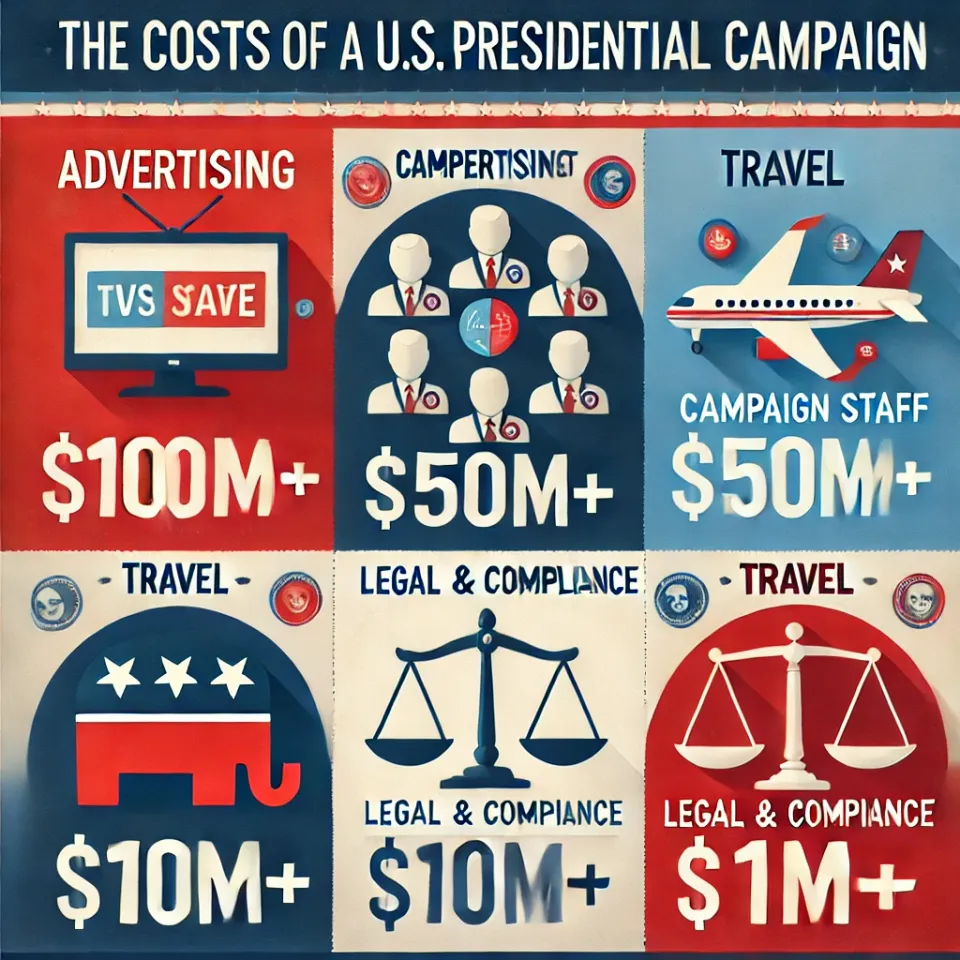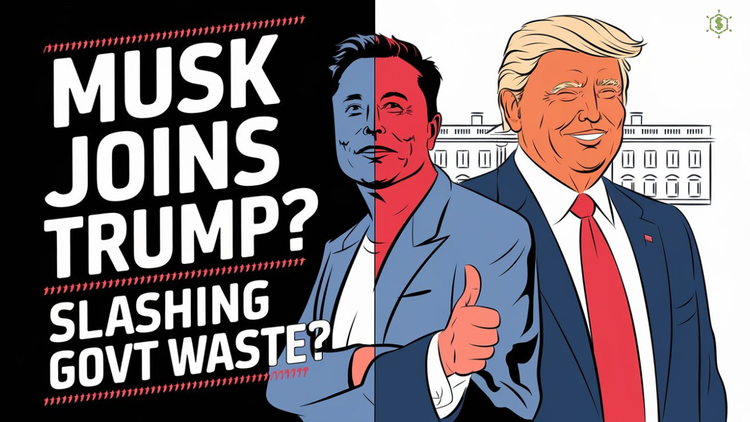How Much Money Does It Cost to Run for President? The Ultimate Financial Breakdown of a Presidential Campaign

Ever wondered how much it costs to run for president? This in-depth guide explores the incredible financial demands of a U.S. presidential campaign, from advertising and staffing to fundraising. Discover the true price of pursuing the presidency.
How Much Money Does It Cost to Run for President? 💸
Running for president of the United States isn’t just about charisma and vision—it’s a financial behemoth. With advertising, travel, staffing, and fundraising, a campaign requires staggering resources. In this article, we’ll explore the real costs behind a presidential bid, how candidates raise these funds, and where all that money goes.
Table of Contents
- The Financial Landscape of a Presidential Campaign
- Major Campaign Costs
- Advertising
- Campaign Staff and Consultants
- Travel and Events
- Legal and Compliance Fees
- Fundraising for the Campaign
- The Role of Super PACs
- How Much Do Recent Campaigns Cost?
- Is It All Worth It? The ROI of Running for President
- Final Thoughts and Next Steps
The Financial Landscape of a Presidential Campaign
The financial landscape of a modern presidential campaign is vast and complex. In recent elections, campaign costs have risen sharply, with the 2020 election setting a record of over $14 billion in total spending by all candidates. Such astronomical sums come from a mix of individual contributions, corporate donations, Political Action Committees (PACs), and Super PACs, each playing a key role in financing various campaign activities.
Let’s dive into the breakdown of these campaign expenses and understand the components that make running for president so expensive.
Major Campaign Costs
1. Advertising
One of the biggest expenditures in any presidential campaign is advertising. Candidates must reach a wide audience across television, digital platforms, print media, and radio. A strong media presence helps shape public perception, rally supporters, and gain undecided voters.
Advertising Cost Breakdown
- Television and Radio Ads: Large-scale media buys on television can cost hundreds of millions of dollars, especially in swing states.
- Digital Ads: A significant portion of the budget—around 20-30%—goes to digital ads on platforms like Facebook, Google, and YouTube.
- Print and Local Advertising: Although less common, local print ads still reach specific demographic groups, especially in key areas.
Advertising is a powerful tool that candidates use to control their image and build a broad base of support.
2. Campaign Staff and Consultants
A presidential campaign is like a company that needs top talent to thrive. From campaign managers and strategists to field organizers and volunteers, the cost of building a team is a substantial part of the campaign budget.
Typical Staff Roles and Their Costs
- Campaign Manager: The campaign manager’s salary can range from $200,000 to $300,000 per year.
- Communications and PR Team: Managing the campaign’s message and image is essential, often costing millions in consultant fees.
- Field Organizers: In swing states, local organizers are critical to ground operations, with costs running up to millions of dollars.
A skilled team keeps the campaign organized, helps secure media coverage, and provides the strategy needed to navigate the complexities of a presidential race.
3. Travel and Events
Traveling across the country to connect with voters and hold events is critical for candidates. From private jet charters to large-scale rallies, these activities require substantial funds.
Travel and Event Costs
- Private Jet Charters: Private jets can cost around $10,000 per hour, leading to millions in travel expenses over the course of the campaign.
- Rallies and Venue Rentals: Large rallies can cost up to $1 million each when factoring in security, sound systems, and venue rental.
These appearances help candidates gain media exposure, connect with supporters, and build momentum on the campaign trail.
4. Legal and Compliance Fees
Navigating campaign finance laws and ensuring FEC compliance are crucial to a presidential bid. Legal fees related to campaign regulations, fundraising reporting, and other compliance issues often reach into the millions.
Legal Expenses Breakdown
- FEC Compliance Costs: Compliance and legal fees for filing with the FEC and adhering to federal laws can run between $500,000 to $1 million.
- Legal Defense Funds: High-profile candidates may require additional legal support, adding to their total costs.
These expenses ensure that campaigns stay on the right side of the law, avoiding fines and penalties that could damage their reputation and viability.
Fundraising for the Campaign
Raising funds is a cornerstone of any successful presidential campaign. Candidates depend on a mix of small-dollar contributions from individuals, high-dollar donations from private events, and PAC contributions. Fundraising events like gala dinners, celebrity-hosted events, and virtual meet-and-greets provide essential income to cover the many costs of the campaign.
- Small-Dollar Donations: Platforms like ActBlue allow campaigns to gather significant amounts from small donations.
- High-Dollar Donor Events: Exclusive dinners and events can raise millions from wealthier donors and corporations.
The Role of Super PACs
Super PACs (Political Action Committees) can spend unlimited amounts on behalf of candidates, provided they do not coordinate directly with the campaign. Super PACs play a significant role in modern campaigns, funding independent advertising, advocacy, and even opposition research.
While Super PACs have drawn criticism for the outsized influence they afford wealthy donors, they remain a powerful source of funding, especially in the most expensive stages of the campaign.
How Much Do Recent Campaigns Cost?
Recent campaigns illustrate the skyrocketing costs associated with running for president:
- 2020 Election: The Biden and Trump campaigns together spent over $5.5 billion.
- 2016 Election: Hillary Clinton and Donald Trump’s campaigns collectively cost more than $2 billion.
These figures highlight the rising costs of media, advertising, and the increasing influence of digital outreach.
Is It All Worth It? The ROI of Running for President
The financial rewards of winning the presidency may be more intangible than a typical investment. However, the influence, power, and ability to enact significant change provide their own form of return on investment. For those who don’t succeed, the experience often catapults them into future political or business opportunities, making the financial sacrifice worthwhile in different ways.
Final Thoughts and Next Steps
Running for president isn’t just a test of leadership and endurance—it’s a major financial commitment that involves vast resources, expertise, and support from countless contributors. With billions at stake, each candidate faces an uphill battle to secure the funds needed to bring their vision to the American people.
Curious to learn more about how to fund major financial goals or understand the economics of influential pursuits? Follow How To Buy Money for more insights:
